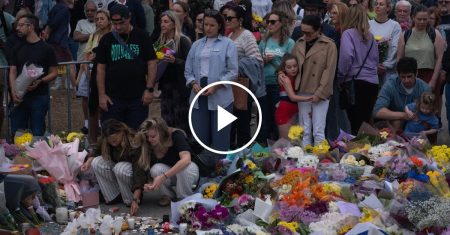Historic Gaza Ceasefire Deal Appears on Horizon as Details Emerge from Diplomatic Talks
Breakthrough Agreement Could Bring Relief to War-Torn Region Within Days
In a potentially watershed moment for the ongoing Middle East conflict, diplomatic sources have indicated that a ceasefire agreement between Israel and Hamas may be imminent, with implementation possibly beginning as early as this weekend. While numerous aspects of the proposed deal remain shrouded in uncertainty, officials familiar with the negotiations have outlined a framework that would include Israeli military withdrawals from key areas in Gaza, a substantial increase in humanitarian aid deliveries, and the phased release of hostages held since the conflict’s outbreak.
The emerging agreement, brokered through intense behind-the-scenes diplomacy involving U.S., Egyptian, and Qatari mediators, represents the most promising development in months of devastating warfare that has claimed thousands of lives and created a humanitarian catastrophe across the Gaza Strip. According to three diplomatic officials who requested anonymity due to the sensitivity of ongoing negotiations, the framework addresses the most pressing immediate concerns while potentially establishing groundwork for more comprehensive discussions. “This represents countless hours of painstaking diplomatic work,” said one Western diplomat involved in the process. “While significant hurdles remain, we’re cautiously optimistic that this could mark the beginning of a sustainable de-escalation process.”
Military Repositioning and Security Arrangements Take Center Stage
Central to the emerging agreement is the planned withdrawal of Israeli Defense Forces (IDF) from densely populated areas within Gaza, though the precise geography and timeline for these redeployments remain points of active negotiation. Military analysts suggest the initial phase would likely see Israeli forces pull back from urban centers while maintaining positions along strategic corridors, particularly near the Philadelphi Corridor bordering Egypt and other security-sensitive boundaries. This partial withdrawal represents a delicate balancing act for Israeli negotiators, who face domestic pressure to maintain security control while international partners push for greater Palestinian civilian relief.
Security arrangements during the proposed ceasefire period present particularly thorny challenges. According to regional security experts, the agreement would likely establish buffer zones and monitoring mechanisms to prevent military rearmament while allowing civilian reconstruction to begin. “The devil is in the details when it comes to these security protocols,” explained Dr. Nadia Mahmoud, senior fellow at the Center for Middle East Security Studies. “Previous ceasefires have collapsed precisely because of disagreements over who controls what territory and how violations are defined and addressed. Both sides will need unprecedented transparency measures to build the minimal trust necessary for this agreement to hold.” International monitors, potentially drawn from regional allies acceptable to both parties, could play a crucial role in maintaining the fragile peace, though their mandate and operational authority remain undefined in preliminary outlines.
Humanitarian Aid Surge Planned as Crisis Deepens
Perhaps the most urgent component of the proposed agreement involves a dramatic expansion of humanitarian relief operations throughout Gaza, where the United Nations has repeatedly warned of famine conditions and collapsing healthcare infrastructure. The framework reportedly includes provisions for daily aid convoys to reach previously inaccessible areas, the establishment of additional distribution centers, and expedited procedures for medical evacuations. International relief organizations have prepared massive aid stockpiles in anticipation of improved access, with emphasis on emergency medical supplies, nutritional supplements for children, clean water systems, and temporary shelter materials.
World Health Organization representatives have characterized the planned humanitarian surge as “potentially life-saving for hundreds of thousands,” but caution that implementation challenges remain formidable. “The logistics of rapidly scaling up aid delivery in a war zone with damaged infrastructure cannot be underestimated,” said Fatima Al-Zahrani, regional humanitarian coordinator for an international NGO operating in Gaza. “We’re facing destroyed roads, collapsed buildings, and communities that have been cut off from basic necessities for months. Even with perfect coordination between all parties, which history suggests is rarely achieved, the humanitarian response will require unprecedented cooperation.” The agreement reportedly includes provisions for the repair of essential infrastructure, including electricity generation facilities, water treatment plants, and healthcare centers that have sustained damage during the conflict, though funding mechanisms and construction timelines remain unclear.
Hostage Release Process Could Begin Within Days
In what many families describe as long-overdue progress, the agreement outlines a phased release of hostages held in Gaza since the conflict began, potentially beginning with civilians, elderly individuals, and those requiring medical attention. While negotiators have declined to specify exact numbers or timelines, sources familiar with the talks suggest the initial release could involve dozens of captives in exchange for Palestinian prisoners held in Israeli facilities. The International Committee of the Red Cross has reportedly been designated as the neutral intermediary to facilitate these exchanges, with medical teams standing by to provide immediate care to freed hostages, many of whom are believed to be suffering from malnutrition, untreated injuries, and psychological trauma.
The emotional weight of this aspect of the agreement cannot be overstated, with families on both sides having endured months of uncertainty and grief. “Every day that passes represents unimaginable suffering for the hostages and their loved ones,” remarked Yael Berger, spokesperson for a hostage families’ advocacy group that has maintained constant pressure on negotiators. “While we welcome any progress that brings people home, we cannot forget that this process must continue until every person is reunited with their family.” Psychological support systems have been established to assist both the returning hostages and their families through what experts describe as an extremely challenging reintegration process after prolonged captivity in wartime conditions.
Diplomatic Challenges and Regional Implications Loom Large
Despite cautious optimism surrounding the emerging agreement, significant diplomatic obstacles threaten its implementation and sustainability. Hardline elements within both Israeli and Palestinian leadership have expressed reservations about key provisions, with some Israeli officials insisting on continued military operations against what they describe as remaining terrorist infrastructure, while some Palestinian factions question whether the agreement provides sufficient guarantees against future military actions. Regional powers have also staked out positions that could complicate implementation, with Iran-backed groups throughout the Middle East signaling potential opposition to any agreement that fails to address their broader strategic concerns.
The regional implications of even a temporary cessation of hostilities could be far-reaching, potentially affecting concurrent tensions along Israel’s northern border with Lebanon, diplomatic relationships throughout the Arab world, and the political fortunes of leaders on all sides. “This agreement, should it hold, represents not just a humanitarian breakthrough but a potential inflection point in regional politics,” observed Ambassador Jonathan Reynolds, former special envoy to the region. “The question becomes whether this creates space for more comprehensive diplomatic engagement or merely a temporary pause in a conflict that has defied resolution for generations.” As negotiators work to finalize details ahead of the potential weekend implementation, citizens throughout Gaza and Israel remain skeptical yet hopeful that this diplomatic opening might evolve into something more durable than previous short-lived ceasefires. For millions affected by the conflict, even a temporary respite from violence represents a precious opportunity to begin rebuilding shattered lives and communities while diplomats pursue the far more challenging task of addressing the conflict’s fundamental causes.








